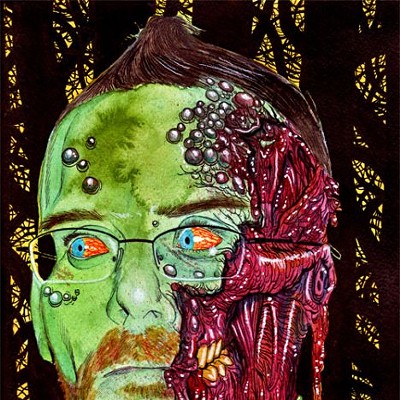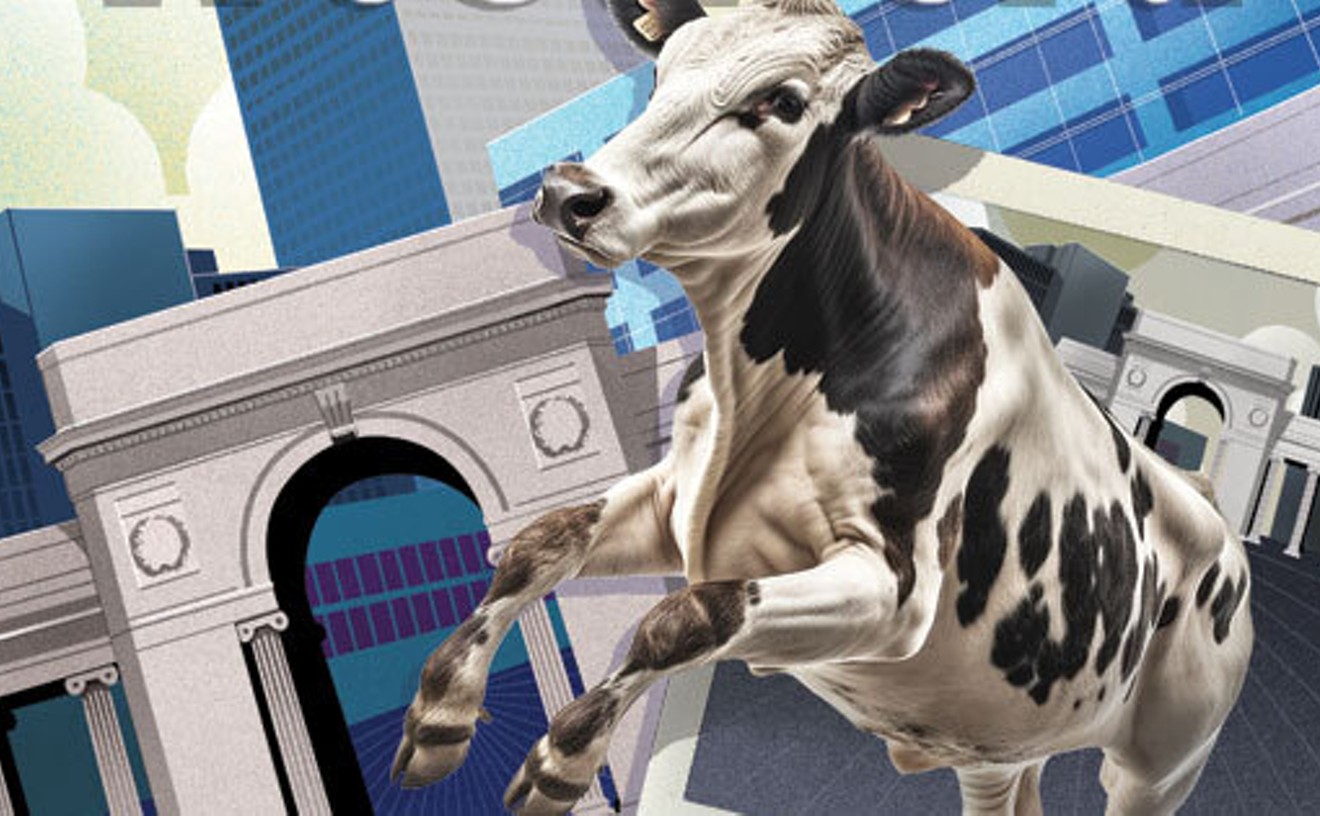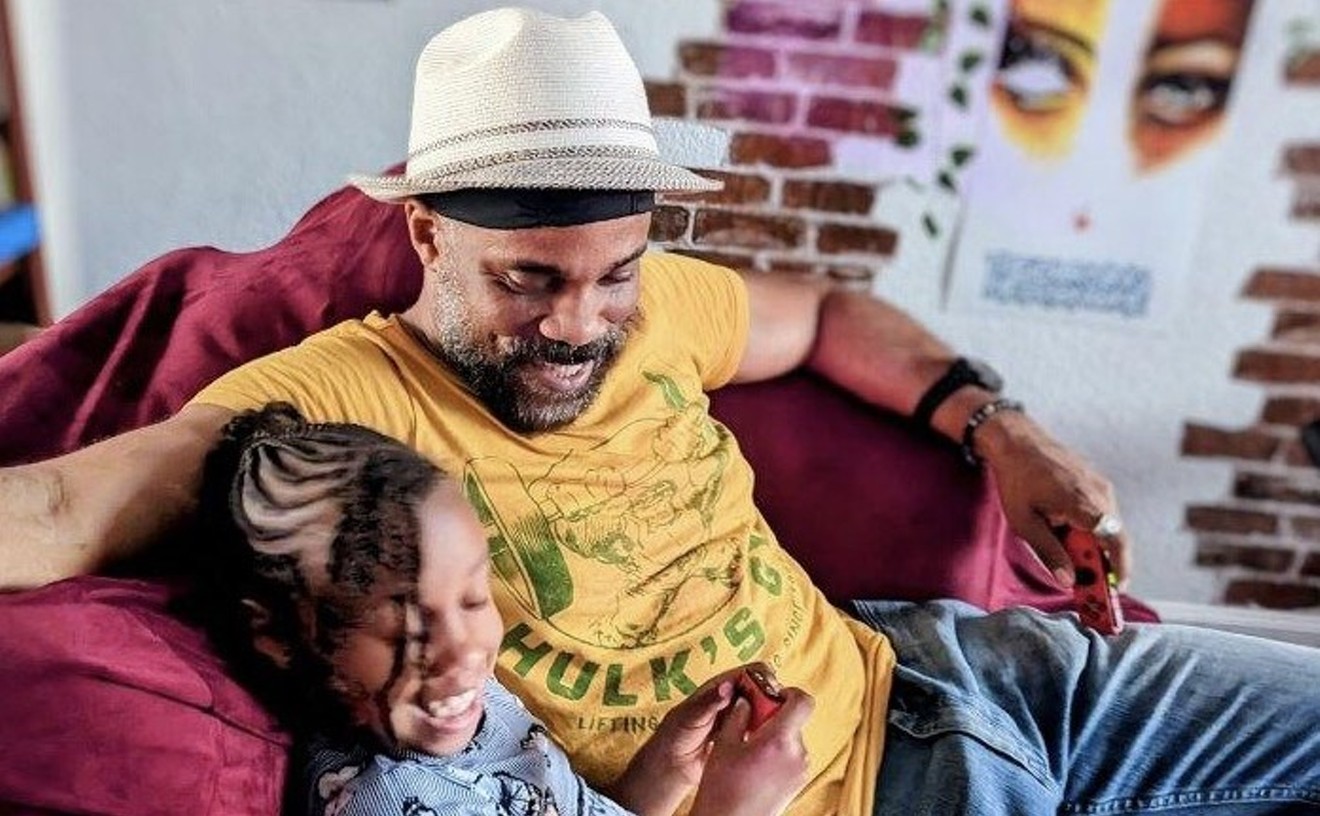Kawin will read from and speak about Horror and the Horror Film at 7:30 p.m. tonight at the Boulder Bookstore. Before the event, we caught up with Kawin to get this eight-point guide to what makes a horror film tick.
See also: - A handy visual guide to horror movie tropes - List: Ten great Japanese horror movies - List: Horror's top five "final girls"
8) It has to be scary Westword: How do you make it scary? What's involved in that?
Bruce Kawin: Horror directors don't agree on how you do it. The art is trying to do that differently each time. The thing is that the horror film has to be scary the same way a comedy film has to be funny. It's really basic.
As you said, everyone does that in different ways, so that's where the magic comes in.
Well, the magic comes in because horror films are allowed to make up anything they want. You can have really fantastic settings and dream worlds and nightmares and all kinds of things.
7) Values at stake There has to be a reason for all of this stuff. Stories are usually about something besides a monster, or the monster is about something else. Like, you could say that Last House on the Left is really about how to run a family. Even the remake is, actually. You could say that Godzilla is about nuclear testing, and the effects of nuclear war. The story is about coming up with an ultimate weapon and deciding it does have to be used but it can't ever be repeated.
6) A monster The monster is the core of the horror film, usually. A lot of them end as soon as the monster is dead. Of course, a lot of them have the monster come back, as a zinger, surprise ending, which hasn't been much of a surprise since Friday the 13th. But they keep doing that. A lot of the endings now are open, on purpose. They try to give you a chill and carry it outside, but people expect it so it doesn't work....I think that horror films, more of them used to have closed endings and they tried to resolve that the monster had fled, so they were more stories of civilization defending itself and healing. But also about closing down its barriers. They had different politics, depending on what film it was.
There are three kinds of monsters. It can be a human being, like Leatherface, or something supernatural like the Mummy, or a conventional monster like Godzilla. The book goes to some trouble to keep those distinct, and to give examples of all of them pretty much down to every kind of horror movie there is.
Where would, say, the zombies of Night of the Living Dead fall under that?
Under supernatural monsters/zombies. The organization is very simple to follow, and it's comprehensive. The books covers like 350 films in just over 200 pages.
With the system you've set up, you can take any movie and figure out where it fits within this framework?
I think it's very helpful.
What's the advantage of understanding horror films through this framework? For the more than casual fan, does it offer new insight into films they've seen before?
It might well do that. It offers a look at what horror is, and then shows how horror shows up in all these movies. Horror in reality, like in a documentary, too. The Holocaust is a horror story, but it's a true one. But sometimes there are horror documentaries like Night and Fog, that are kind of about horror, and how you express it and how you try to get it into a shot, even if that's impossible. So that's where reality comes in. Anyway, the fear and revulsion make up horror and I go into some detail about how they work together. It gives you a groundwork for looking at horror films, so you see the ones you've seen many times in a different way.
5) Spectacle You have to show people what they came to see. Things have been getting more violent and more bloody for some time, so you have to kind of top what the previous films did, or what you did earlier in your own film. You need to show somebody meeting the horrible monster in action, or the horror moment, or something like that. You have to show it.
As far as the need to continually top what's come before, is that unsustainable? Is it a cyclical thing, where we're going to see a step back at some point?
I don't know, I've seen a continuous increase, say from the 1930s forward. I don't think it's a problem, I think that's just what they do. I wouldn't say they're going to run into a problem, because they always balance them with suggestion scenes -- scenes in which they're not showing violence or not showing the blood.
4) Suggestion This is where it gives you a hint as to what's going on, and that's often more scary than direct presentation .They have ways of suggesting things are going on off-screen and they have ways of balancing those with the spectacle scenes to build up a rhythm. That's important, so you don't have a film that's just straight spectacle and gore. Even the gore films are broken up with other scenes.
Like a scene where the characters are trapped in a room and something is trying to get in, but you can't see it?
That's a good suggestion scene. A good example would be in the film Suspiria, where the girl is chased down the hall by a guy with a razor, but she doesn't ever see him until he kills her. So the hallways become brightly colored, they go red and blue, and you get her fear. The scene builds her fear up while she's running from here to there. At one point she's in a room and someone's trying to get the lock open with a straight razor and it's really scary. Finally she gets killed in a vat full of razor wire and the character with the razor shows up but you only see his hand. They get to spectacle eventually, but it's at least five minutes of buildup first.
Another movie that seems to rely more heavily on suggestion than spectacle would be Jaws. You barely see the shark in that movie.
Yeah, they build up to a final [scene], the shark bites the man on camera. They build up to that. Spielberg said that they did that because the mechanical shark didn't work very well. They wanted more spectacle than they had, but it works better by suggestion.
3) Story A good story is a good story. People recognize it, they want it, and good films have them. It's interesting, it's unpredictable, and it's involving.
As you said, horror movies can offer the fantastic, so they have the potential for some groundbreaking stories. Are there any horror movies that stand out for their story in particular?
Absolutely. Dead of Night, The Last Wave, Don't Look Now. The Fear. Curse of the Cat People, the original Cat People. More recently, The Cabin in the Woods.
2) Control of atmosphere As far as this goes, does that play in somewhat with suggestion?
Yes, it usually does. For that, people should see the films of Val Lewton.
I saw a film he produced, I Walked with a Zombie, a couple years ago. It was a very atmospherically effective film.
Terrific, yeah. They don't even nail down whether the woman's a zombie. It's a wonderful film. A lot of these films are becoming available on blu ray, like Isle of the Lost Souls just came out from Criterion. That's a really good restoration. A lot of these films are much more available than they used to be.
Are there universal elements of building up a good atmosphere, or does everyone bring a unique imprint to it?
Well, that's a matter of style. There's a Lewton picture called The Body Snatcher, where there's a blind street singer who walks into the darkness and gets killed. You hear her song stop, but you don't see anybody kill her. You figure out that's what happens, but what you're looking at is the street with a dark area in it. It works.
1) Hero You need some characters that the audience follows. You don't have to like them. Someone to root for or even to dislike, but you follow the person. Generally they're in the middle of things, and curious. A lot of them are brave. Sometimes they're forced into a situation, like Ripley in Alien, and they're brave and resourceful. We like them, and we want them to win. They think of things and they're clever.
Very often they solve the mystery of what do you do about the monster. That goes back to the films of the '50s, some scientist or doctor or whoever, who figures out what's going on -- why the tarantula is big or whatever. It's good to be intelligent and resourceful and ready to take charge, like Ben in Night of the Living Dead. He gets everyone organized, while Harry is hiding out in the cellar, which makes him a bad character. Ben's a good example of a total hero. He knows what to do under pressure. You need those kinds of characteristics, but the hero doesn't have to be a gung ho hero. It can be a more low-key protagonist and that can be interesting too, like in Shaun of the Dead.
Follow @WestwordCulture











